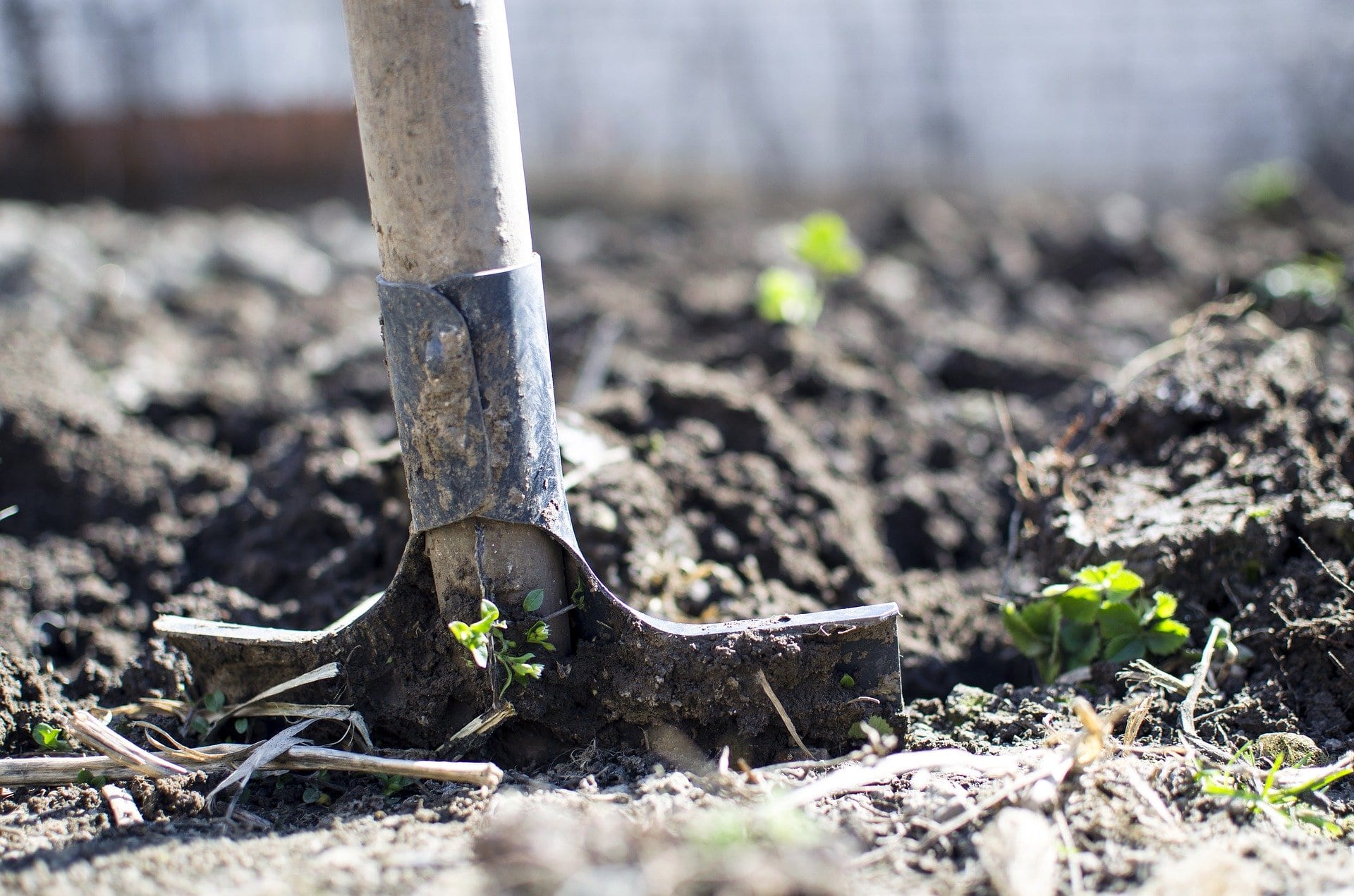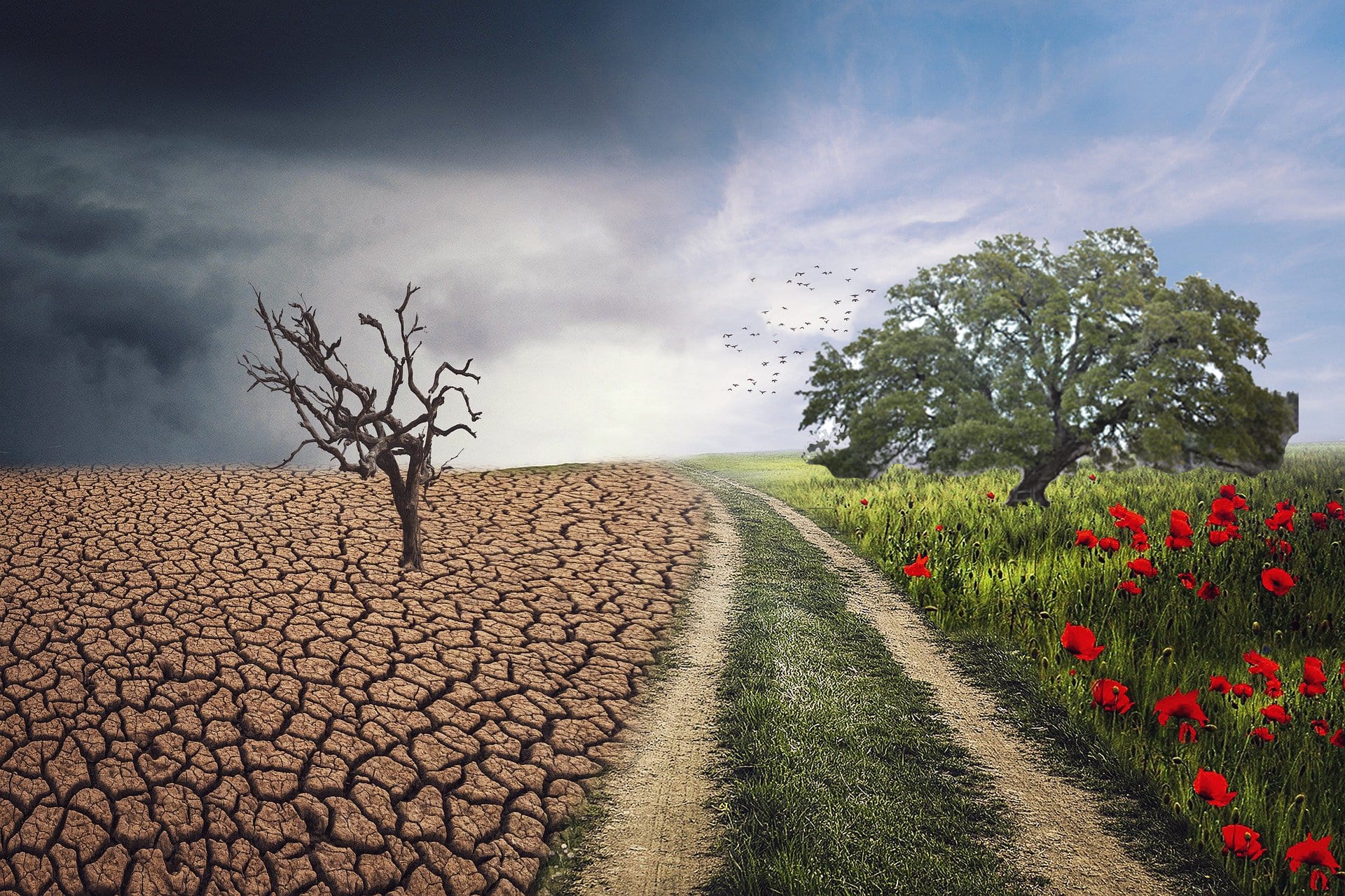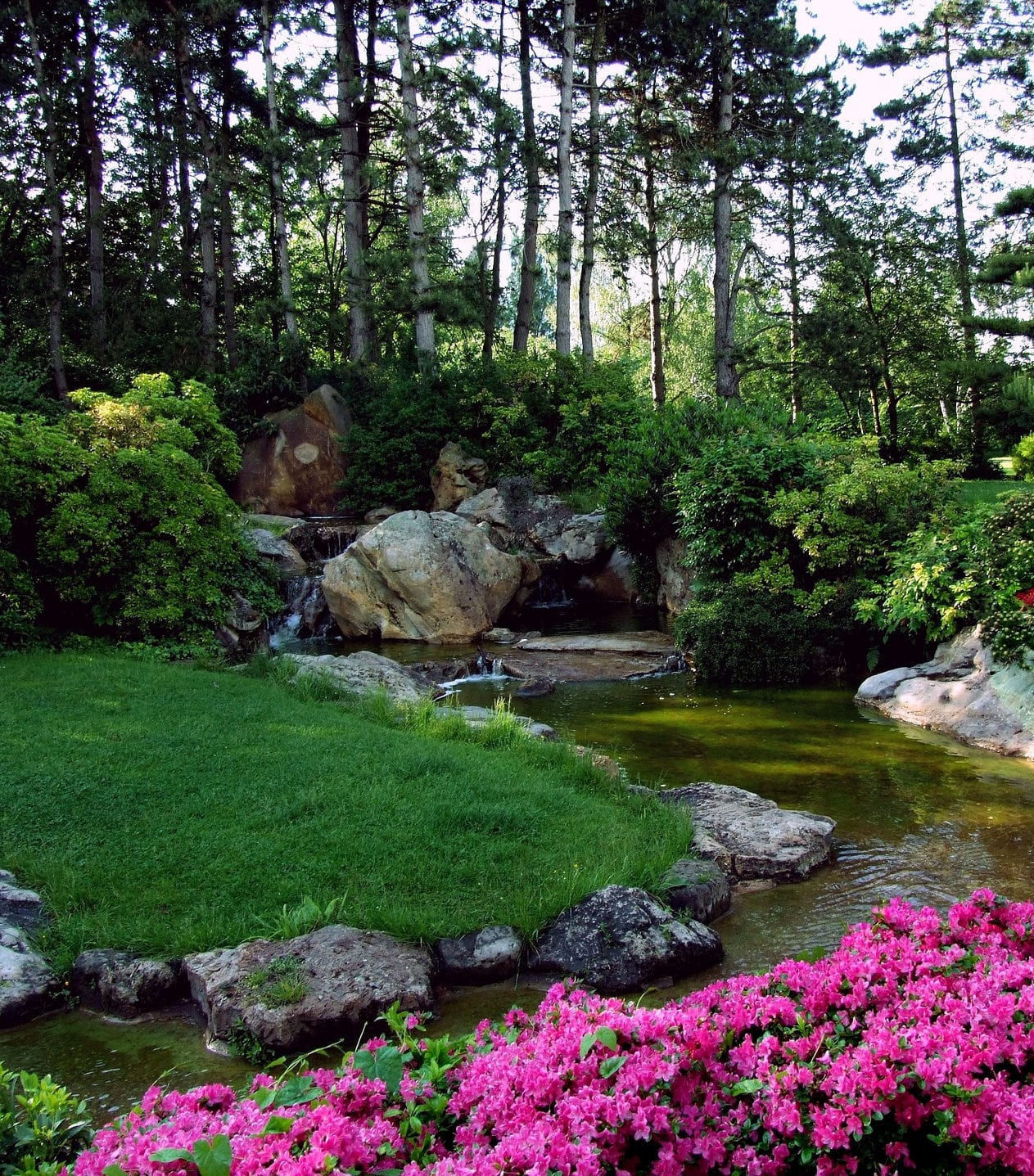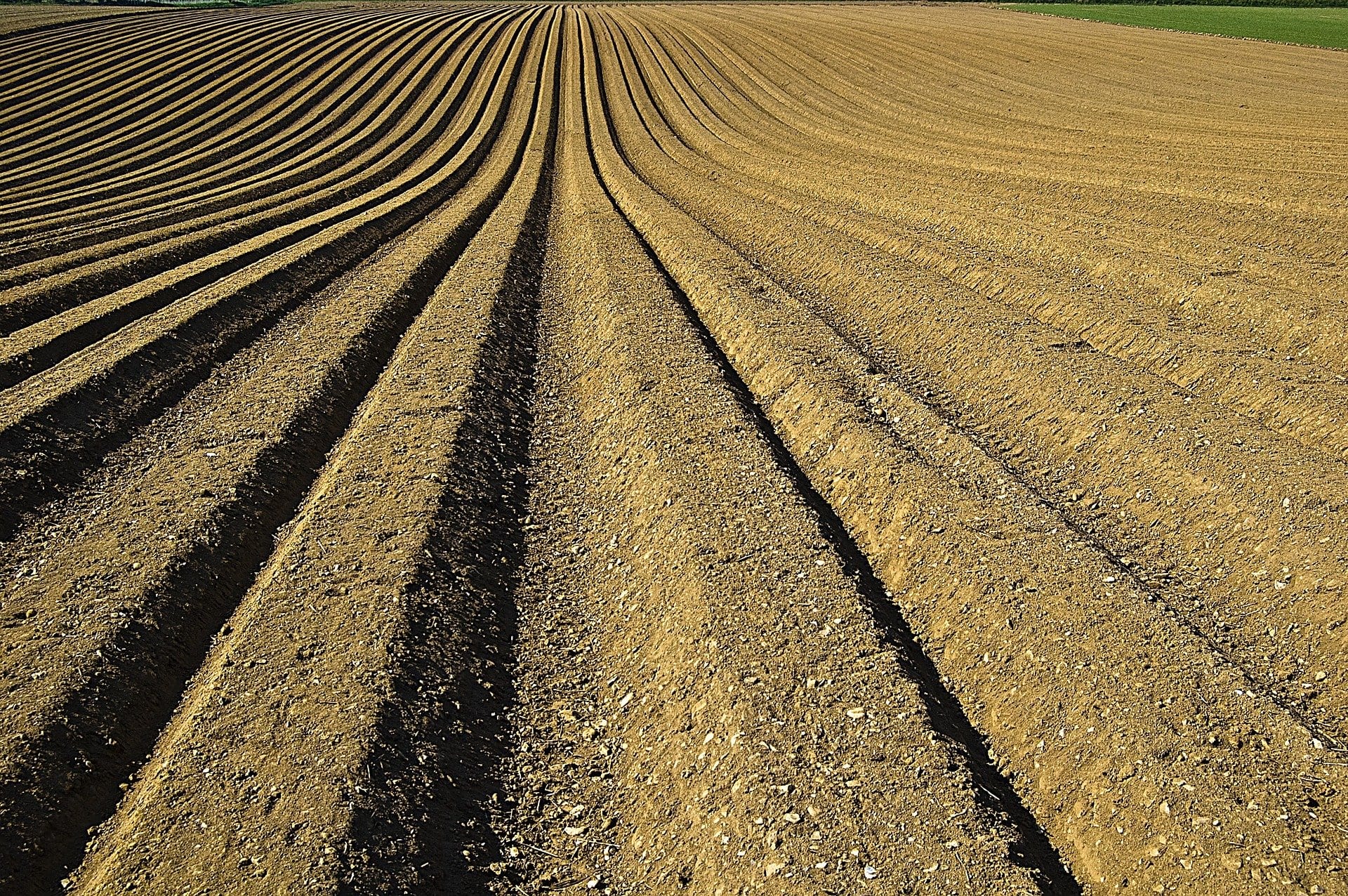by Amanda Sloan
Realizing Our Professional Responsibility
As landscape professionals, we are in touch with the natural world in ways other humans do not experience. We are literally “in touch” as we finger and sniff the earth in which our plants grow, snap off a leaf to examine it, or lay our hands on a rock or concrete structure to check its surface. Our practiced eyes sweep over a forested hillside, city streetscape, busy parkland, coastal marsh, farm field, or small garden, noting in a moment what has changed as time goes by. We are acutely aware of weather: precipitation, wind, air temperature, and seasonal change. We are intimately acquainted with the birds, insects, and animals who share the landscape with us. All these elements are key to what we do. At the same time, we keep equally observant eyes on human activities. Whether we are landscape designers, contractors, farmers, or nursery growers, our specialty is to work every day balancing on that delicate edge between supporting human culture and sustaining the natural world.

Landscape professionals witness daily changes to the land in their care as a result of changing climate; they also have unique insights into solutions.
Today many landscape professionals realize they are in a unique position both to notice the changes happening in the world due to greenhouse gas emissions, and to propose and enact creative solutions to this problem. But, just like any other human enterprise, landscape work is entrenched in traditional, sometimes harmful, ways of doing things. For example, one of our most utilized materials, concrete, contains cement which is responsible for an estimated 8 percent of all world carbon emissions. The carbon emissions caused by transporting landscape materials like stone from one country to another, by building structures, hauling plants, and operating construction and maintenance machinery, all contribute to the problem. Ditto for the releases of carbon caused by clearing land and leaving large open areas of bare soil. Over the past century, hand tools like rakes and clippers have been replaced by gas-driven blowers and trimmers. And, for the landscape-related professions to somehow extract themselves from these established practices seems overwhelmingly daunting. Many of us wake up at night wondering worriedly if it can be done at all.
Taking on the Task
The Ecological Landscape Alliance has typically supported the view that “thinking globally and acting locally” is a productive first step towards responsible stewardship of the natural world. Addressing aspects of climate change in the landscape has been a common topic at ELA conferences and in webinars over the years. In 2018, ELA began serious discussion at the board level about what kinds of practical tools could be developed and promulgated to help landscape professionals change over to methods that do not cause greenhouse gas emissions. ELA gathered a working group together, to begin looking at creation of a set of model landscape specifications for reducing carbon emissions on landscape jobs. The idea was that these could be used locally, adapted for specific jobs, by professionals such as landscape contractors, designers, and architects; and even by horticulturalists and agriculturalists. The group is led by former ELA board member M.L. Altobelli, owner of M.L.’s Greenery in Motion in Massachusetts, and a noted local practitioner, activist, and lecturer on the topic of carbon sequestration in soils.

Now is a critical time for professionals working in the landscape to consider all opportunities for the industry to become carbon neutral.
As the ELA “carbon group” began to discuss the task, they quickly realized they had taken on a giant project. Members of the group include those representing such allied professions as landscape contracting, landscape design and architecture, horticulture, and agriculture. Group members reside in several different states. To start to get a handle on the project, a methodical step-by-step process was adopted. The group has taken the past year to explore what is already out there to help landscape professionals, and to narrow down the possible scope and format of a “carbon specifications” document.
Interim Report on Resources
Like the ELA group, landscape organizations all over the world have realized now is a critical time, and are mobilizing on resource creation to help the landscape industry go carbon neutral. The set of complimentary tools that are being produced will, it is hoped, help slow the impact landscape work has on destructive climate change.

A new tool, Pathfinder, provides a carbon profile for landscape projects, helping professionals understand the long-term effects.
One exciting new web-based tool, just released to the public this year, is the Pathfinder. According to the American Society of Landscape Architects, “It is a landscape carbon calculator that guides designers on the path to becoming Climate Positive, calculating the embodied carbon, operational carbon, and carbon sequestration of any landscape project…. [T]he app encourages design strategies that will enable projects to sequester more CO2 than they emit – becoming Climate Positive.” A trial run of the Pathfinder shows how helpful it is: the user inputs a specific project’s size, location, hardscape, softscape and plants, and expected maintenance methods. The app gives the user a project “score” for carbon sequestration/elimination, and offers the opportunity to change out sizes, quantities, materials, and other parameters to improve the carbon score. The Pathfinder was developed by a team led by landscape architect Pamela Conrad, a principal at CMG Landscape Architecture and a 2018-2019 Landscape Architecture Foundation (LAF) Fellow for Innovation and Leadership.
Another good, preliminary source of guidance is the Landscape Architecture Foundation’s Landscape Performance website. On this site the user can filter for model projects featuring Carbon Sequestration and Avoidance. A Benefits Toolkit tab lists online resources that approach the carbon challenge from many different angles, including agriculture and general construction.
What ELA Can Offer
Despite the increasing sophistication of online support resources, it is evident that the move to switch over to carbon-neutral practices, in those human activities that affect the land, is still just beginning. As mentioned earlier, ELA has been a leader in providing education in the form of conference sessions and webinars on carbon sequestration and reducing carbon release in landscape projects. Importantly, information about correct methods of enhancing and handling soils, which have such a big role in sequestering carbon, is not covered in many of the current online resources, and this is an area ELA has knowledge of and can contribute to.
Today, the ELA Carbon Working Group is beginning its approach by identifying what types of users might be most likely to need the information we can provide. The group has so far identified four divisions of users who can benefit from a written document with specifications for sequestering or avoiding carbon use in the landscape: Landscape Designers and Architects; Installation Contractors; Maintenance Contractors; and Residential, Municipal, and Commercial Site Owners. Other groups to consider are state and federal agencies and agricultural concerns both large and small. The group has further considered the types of opportunities, constraints, and motivations faced by each user division. These may shape the best way to offer help. Finally, the group has made an initial suggestion as to an “end product” to help each group:
Landscape Designers and Architects
Opportunities, constraints, and motivations:
- Bound by specifications, product availability, and local codes
- Often but not always present for installation
- Not usually involved in maintenance, but can provide maintenance manuals
Goal:
- Create or upgrade the very best specifications we know of into a model document. Include specifications regarding soils.
Installation Contractors
Opportunities, constraints, and motivations:
- Reality dictates a need to be driven by the bottom line
- Best installation practices may be affected by above
- Certification process for carbon-neutral installation would add value
Goal:
- Maximize value of best installation practices to make it worth contractors’ while: provide funds, advertising, certification to support carbon-first practices
Maintenance Contractors
Opportunities, constraints, and motivations:
- Often but not always the same as previous group
- Most directly involved both with the client and the long-term health of the landscape
- Client driven – by price and by appearance
Goal:
- Provide learning opportunities around concept that carbon-first landscaping is less expensive in the long run and that appearance and function can work together
- Provide certification to add value
Site Owners (Residential, Municipal, and Commercial)
Opportunities, constraints, and motivations:
- Knowledge of the problem should motivate – provide education and publicity
- Local laws or codes provide carrot/stick
- Cost matters
Goal:
- Education and communication through learning session dedicated to owners, including stories shared with them. Create the stories homeowners can buy into
- Create model landscape codes that can be adapted by municipalities
Anyone Who Breaks the Ground
Of course, this guiding framework is only the beginning, and there is a lot of catching up to do. Says Cathy Rooney, principal at Massachusetts-based Designer of Greens and a member of the ELA Carbon Working Group, “In the end there are a large number of groups to hold accountable: Agriculture, Forestry, Residential Landscaping, Commercial/Institutional sites, Solar and Wind construction and maintenance, Contractors, Departments of Transportation – anyone who breaks the ground – that’s the base line point; that’s where the damage starts to occur.”
ELA’s ability to collect, through its 27-year-old network of experts, specifications around soil management and enhancement may be the most helpful piece it, as an organization, can contribute. Earth’s soils hold by far the greatest amount of carbon in the terrestrial world, more than the atmosphere and plant and animal life combined (the ocean however holds the most carbon of all). When ground is broken or left unplanted, carbon is released. Hilary Noonan, landscape architect, principal at Missouri-based Syntax Land Design, and member of the ELA Carbon Working Group, says “I’m trying to get people to listen to what farmers are telling me about problems they are having trying to use regenerative agriculture principles. They are only allowed to use cover crops when they are resting fields. They are not allowed to use cover crops while they are raising row crops. This leaves a lot of bare soil to oxidize organic matter. These impediments to carbon sequestration in agriculture need to be addressed.”
“Soil underlies every single project everywhere, and much soil could be returned to a functional nature after construction,” comments ML Altobelli. “Any open soil can be managed with knowledge and support to become a stabilizing and integrating part of addressing the carbon problem. Open fields, parks, woodlands and forests are essential for calming weather extremes and increasing localized water stability. Droughts and floods cost local municipalities and states a lot of money!”
ELA’s Carbon Working Group intends to keep working to create tangible resources to help landscape professionals do their part towards solving the current climate crisis. ELA members and newsletter readers live all over the United States, Canada, and indeed, all over the world. The group is eager to hear readers’ ideas. Send us an email.
About the Author
Amanda Sloan, RLA, ASLA, is a Massachusetts-based landscape architect with more than 25 years of experience on ecological projects. She has worked with design firms both large and small, most recently on large public landscapes with BETA Group, Inc., a multi-disciplinary design firm. She specializes in parks, rain gardens, multi-use trails, and native plants.


